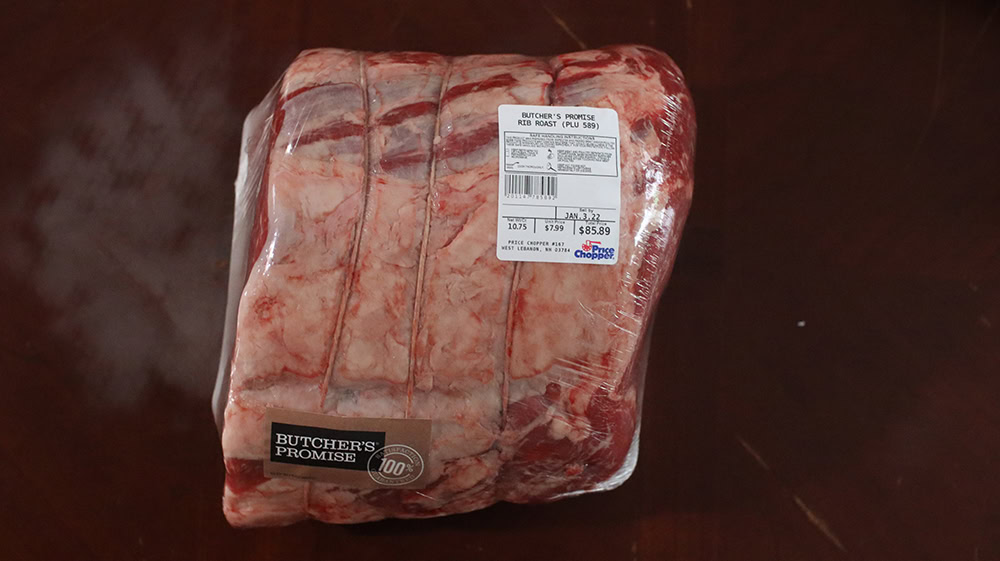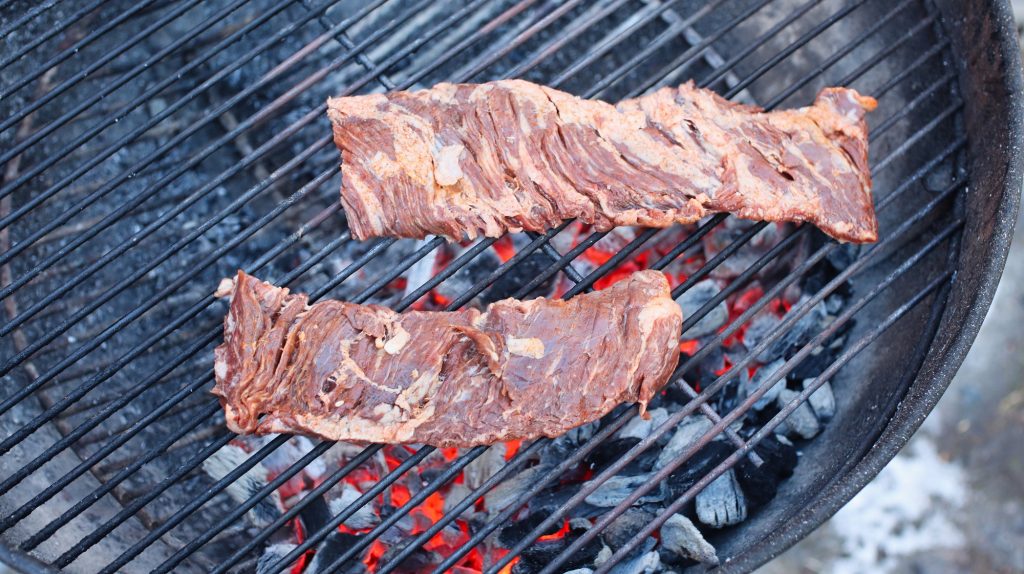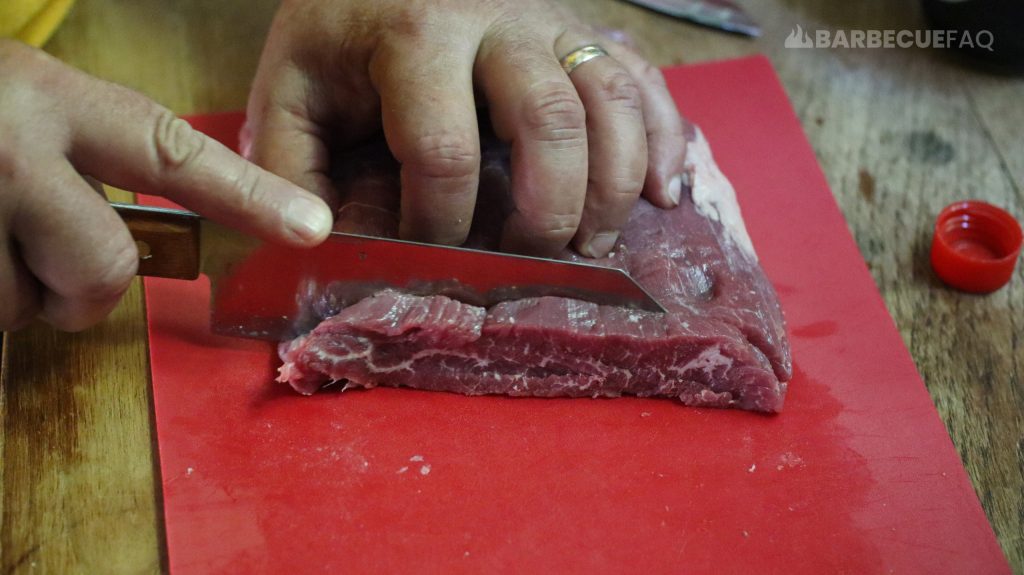It’s all about the tenderloin.
A porterhouse must have a tenderloin that is at least 1.25″ wide. Anything smaller is a t-bone steak.
A t-bone also must have a tenderloin that is 0.5″ wide.
Meaning, all porterhouses are t-bone steaks, but not all t-bone steaks are porterhouses.
They Both Still Have the “T” Bone
The t-shaped bone is a result of the lumbar vertebra being sawed in half through the vertebral column.
Picture a cow from the backside:
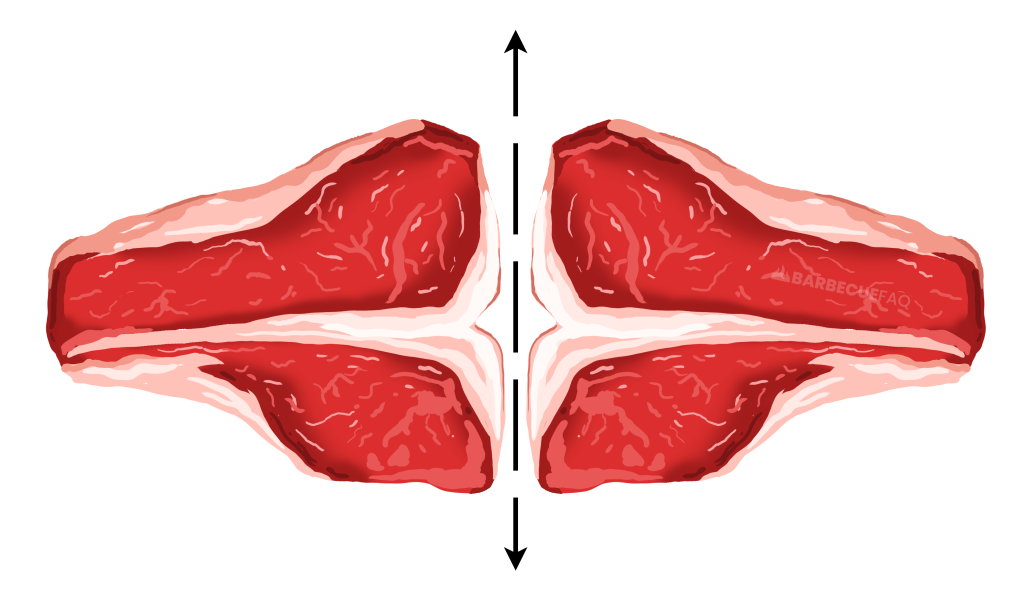
The center line of the “T” is a transverse process of the vertebra.
The void semi-circle is half the vertebral foramen.

They Contain Similar Muscles
Both steaks will have:
- A Tenderloin
- A Strip loin
The strip loin is the larger steak:

Scientifically, it’s the Longissimus Dorsi muscle – the same main muscle found in the ribeye.
Porterhouse does contain part of the gluteus medius (the main muscle of the top sirloin).
The tenderloin is then the smaller steak:

The whole tenderloin is made of 3 muscles:
- psoas major,
- psoas minor, and
- iliacus
A t-bone steak will come from the front part of the short loin because the tenderloin muscle tapers from small to large.
Porterhouse steaks are then taken from the opposite side because the tenderloin is bigger.

What Do You Mean by 1.25″ for the Tenderloin, How is that Measured?
It’s from the centerline of the bone, to the edge (width-wise)
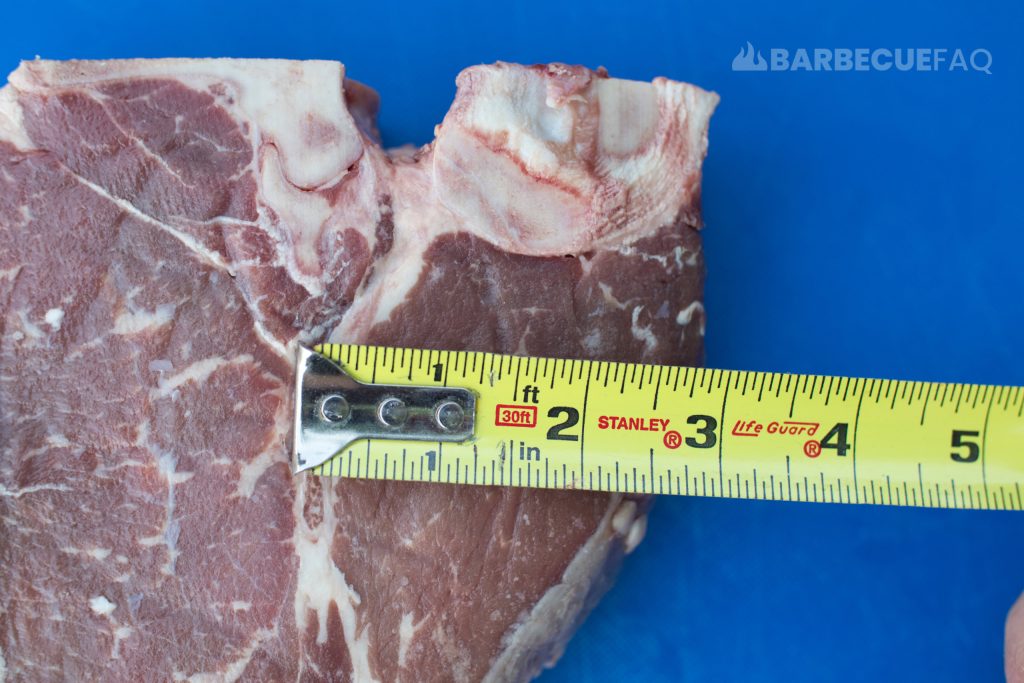
Remember, a Butcher Wants to Make as Much Money as Possible
These steaks are cut the way they are to make money.
Let’s break down pricing for all these cuts of meat that comprise these steaks (Wild Fork Foods pricing as of 9/13/2024):
| Cut of Meat | Price/lb | Estimated Cost |
|---|---|---|
| T-Bone Steak | $11.98/lb | $22.16 |
| Tenderloin (steaks) | $19.98/lb | $17.48 |
| Tenderloin (whole) | $15.98/lb | $93.48 |
| NY Strip | $10.98/lb | $15.37 |
| Porterhouse | $12.98/lb | $32.45 |
NY strip is the cheapest since it was separated from the tenderloin.
The tenderloin has the greatest price per lb.
T-bone and porterhouse steaks are more money than just an NY strip because it has part of the tenderloin.
Difference in Cooking Method
T-bone steak is typically cut to 0.75-1″ thick.
Porterhouse is typically cut to 2-3″ thick.
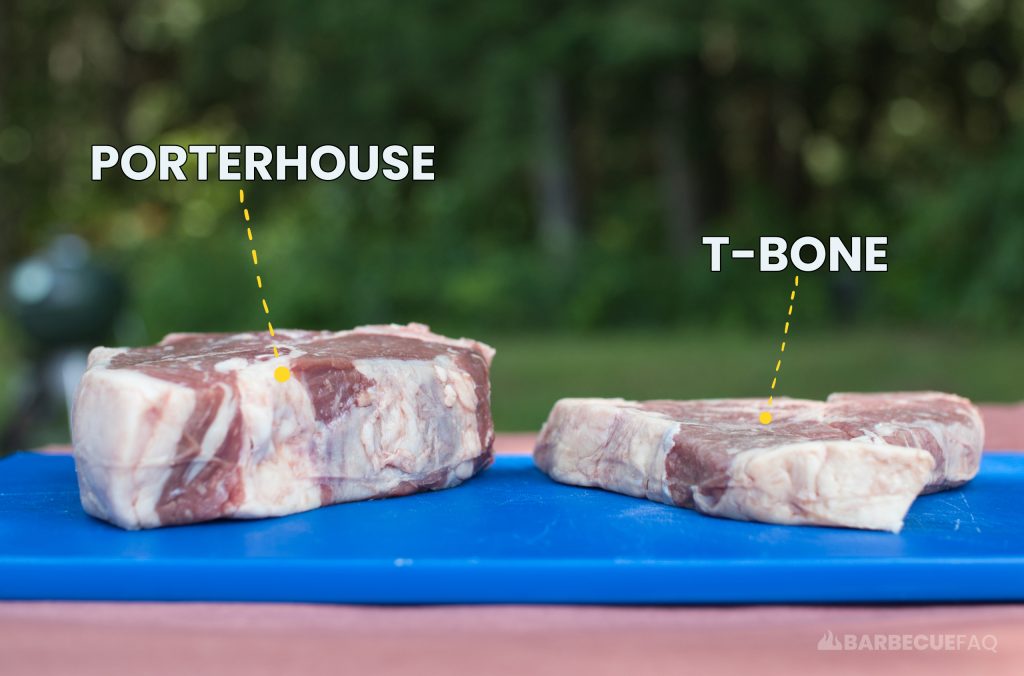
Meaning, t-bone is best seared hot and fast in a pan or grilled to medium-rare.
Porterhouse is best slow roasted and then finished with a sear (or the opposite) so the inside can finish with the same temperature as the outside.
Porterhouse can also be sold thin too, which you can similarly cook it like a steak.
Cooking Either of these Steaks Without Overcooking the Tenderloin is Tough
Methods like Sous vide or reverse searing are best here.
This helps to prevent the small tenderloin from overcooking.
It’s sometimes borderline impossible for t-bone steaks as the tenderloin is a literal morsel.


